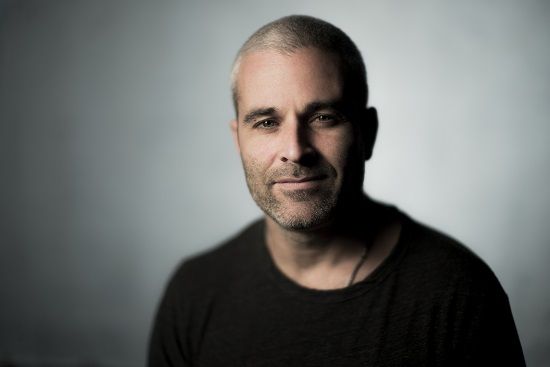
How Harbor Pictures Crafts A-List Work in All Three Formats

A pioneer in end-to-end production and post, co-founder and president of Harbor Picture Company, Zak Tucker, is arguably one of the most interesting people to talk to on the changing landscape of film-making. Over the past 18 years, together with renowned colourist, Joe Gawler, and cinematographer, Theo Stanley, Tucker has built a production and craft post studio that delivers A-list quality work in all three formats – commercial, feature film and episodic. Based in New York City, Harbor has delivered production and post-production for award-winning entertainment and commercials, including the likes of high stakes series, ‘Billions,’ Sci-fi epic ‘Arrival’ and the re-make of the Disney classic ‘Beauty and the Beast’.
We sit down with Zak to find out how Harbor broke the post and production mould, what tech keeps it at the forefront of the industry and what it’s like to have the opportunity to work across A-list commercials, features and series, all at once.
Q> How did you get into film-making, what is your background?
ZT> I was born and raised in New York. I started out on the production side, working as a production assistant and doing location managing and that kind of stuff. Then I went to a graduate school in journalism at the University of Colorado, in Boulder, and that’s where I got into documentary filmmaking. Weirdly, film wasn’t something I’d specifically ear-marked as a career but when I was young I’d always enjoyed being part of a large team who could collaborate on something that’s bigger than the individuals involved. Film is a great environment for that kind of collaboration. I also liked the business side of things – the combination of art and commerce.
Q> How did you cut your teeth before opening Harbor Picture Co?
ZT> Whilst I was in Colorado, I got an internship as an editor at a post house and that was really when I got into the technology side of film-making. When I came back to New York I started working on the feature film side. My first gig was working for Greene Street Films. In 2000, I started a boutique editorial shop for commercial and feature films called Swete Post, in the Village in New York, and kept that going until I founded Harbor in 2010.
Q> Your studio is known for being at the cutting edge of technology and acting as a leader in the field. How did you start out? (For example, was it originally production and then editorial and music came later, or did you begin as a fully integrated facility?).
ZT> During the early days of Harbor, we were focused on the commercial side of things - mainly high-end luxury fashion brands. I was coming from the post side of things and my business partner Theo Stanley was coming from the physical production side. There was a moment, just before we started Harbor, where a lot of the technology barriers had broken down. It was more feasible to do productions from start to finish from ideation, through physical production, all the way to each post production phase. We didn’t understand why we still had to operate under the traditional motive. We thought ‘why couldn’t we bring it from start to finish all under one roof?’
Q> At this time, your business proposition was quite a rare one. How did clients respond?
ZT> They responded really favourably as they had one management and creative voice from start to finish which brought the level of work up to a very high fidelity. Because of the breakdown in silos, we were also able to compete at the highest levels with post companies that had been around forever. We were the only ones doing this at the time. Once the clients started seeing what we could do creatively and financially, as well as quickly, more and more of them started adopting that way of working.
Q> How did you ensure you remained cutting edge in a high-quality, cost-effective way, as you scaled?
ZT> Our DNA was always at being on the bleeding edge technology-wise because we wanted to find ways to push the creative and at the same time deliver on tighter budgets and faster timelines. We were out there on the edge, taking quite a big risk, but 9 times out of 10 we were able to be successful because we were comfortable with playing with that technology and making it work. It wasn’t always easy but it was part of our promise and ethos to deliver on it. As a result of this, a number of our clients were crossing over into longform and episodic work and we came along with them. At the time, digital acquisition and delivery became the primary format over celluloid. Once that happened, it really opened the floodgates for us and levelled the playing field because we didn’t need to have a lab. It meant we were able to compete with the likes of Technicolor, Deluxe and The Mill, who really had cornered the marketplace.
Q> What key processes ensure the smooth running of your business? We hear you use Sohonet?
ZT> What’s extremely valuable about Sohonet is that it puts us on a very secure private network which can guarantee bandwidth. Because we are following and chasing commercial, feature and episodic work, all over the globe, we have to be able to get data home quickly and securely. They’re mission critical these days and because it’s private, we really trust the security protocols around it. The key thing they do is support us. When we are doing supervised remote sessions with directors which we can’t have go down, or even drop a frame, that’s where Sohonet really come in to play. Due to the robustness of their network and the way they institute their protocols, we have significant peace of mind that the sessions will be secure, and they won’t drop out. That is virtually priceless. They’ve created an internet catered to the media world.
Q> You’ve worked on some incredible episodics and features, ‘Arrival’, ‘Billions’, ‘Game of Thrones’ ‘Beauty and the Beast’ and ‘Madam Secretary’, and most recently ‘Solo’, and ‘Oceans 8,’ to name a few. What has been your personal highlight?
ZT> It’s really tough for me to pick just one! Some of the recent highlights for us include doing the grade on the latest edition of the Star Wars saga, ‘Solo: A Star Wars Story’. To be part of that legacy is terrific and working with cinematographer, Bradford Young was incredible. On the episodic side we’re really proud of ‘Billions’. It’s now moving into season four on Showtime. The show creatives and writers virtually live at Harbor. Their writer’s room is here, the editorial is there and the post production which is a really interesting revolution. More often than not, in the past, the writers based themselves in LA and came to New York just to shoot, but then return to LA for post, but it’s great to have this team all based here, for each stage of the process. This represents a real sea change in where and how episodic production is being accomplished.
Q> Episodic, feature and commercial formats all operate very differently as a process, but do you feel the skills used in one area are beneficial for another?
ZT> Much of the technology infrastructure and artistic talent required can go across all three genres. Our colourist who did the ‘Solo’ movie is also just working on spots for Mercedes. We find this to be an advantage. They bring aspects of all three disciplines to each area. It gives a unique creative output. You obviously can’t treat each one the same way, the schedules and protocols are different, but there’s most certainly skills that transfer especially as commercial formats are diversifying.
I believe some of the most interesting work is happening between feature film and episodics. For example, one of our client directors, Stephen Soderbergh (Ocean’s 11, Magic Mike, Logan Lucky) has in recent years transitioned into directing a number of episodic series – and he’s not the only Hollywood director to be doing this. Feature film directors are playing the standard in this field because they approach each episode of a series like a standalone feature film - they have that workflow in mind. It’s caused a real sea change in episodics because it brings new voices for writing, directing and producing into this format.
Q> Would I be right in assuming that commercial clients love the fact their craftsmen, producers, directors etc work across these different formats?
ZT> Clients appreciate when they come into Harbor that they can play with craft artists in both commercial and feature worlds. They seem to like that cross-disciplinary skillset. It is also a sign of the times. More and more we’re seeing advertising and entertainment coming together. It’s an extremely fertile ground. We’re intriguingly positioned (because of our DNA in all three formats) to play in that cross-pollinated world.
Q> Do your staff love the fact they have the opportunity to work on all of those formats?
ZT> Part of our premise as craft artists, producers and technologists, is that we’re a dynamic curious and ambitious group of people, who want to play in multiple universes. It keeps everything fresh and interesting. It’s why we’ve been able to attract some of the world’s top talent. They know they can really push the limits of their creativity and ambitions. For some people it’s not the most comfortable ground but it’s certainly the most fertile.










